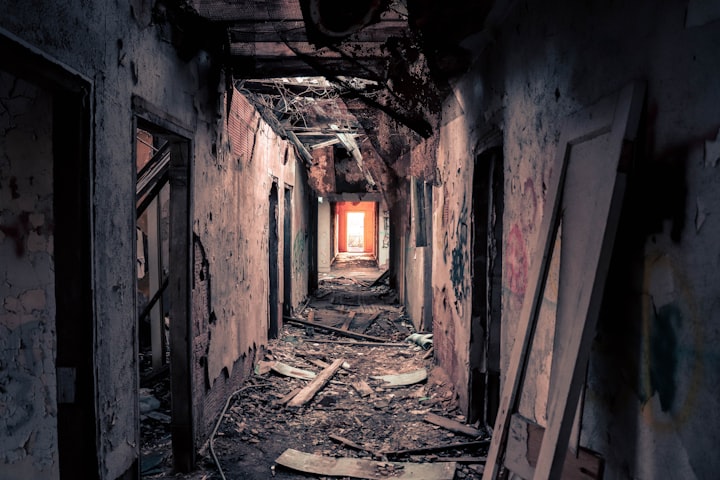Unveiling the Past: 10 Haunting WW1 Archaeological Discoveries
In this article, we will delve into the top ten unsettling WW1 archaeological discoveries that shed light on the realities of this devastating period.

The First World War, often dubbed "The Great War," was a global conflict that changed the course of history. Over a century has passed since the guns fell silent, but the echoes of this catastrophic event still resonate through archaeological discoveries. Unearthing remnants of this brutal conflict provides us with poignant insights into the lives of those who fought and the immense toll the war took on both soldiers and civilians alike. In this article, we will delve into the top ten unsettling WW1 archaeological discoveries that shed light on the realities of this devastating period.

1-The Somme Battlefield:
One of the bloodiest battles of the war, the Battle of the Somme, took place in 1916. Today, archaeologists continue to unearth artifacts from this infamous battlefield. The discoveries include trenches, munitions, personal belongings, and even the remains of soldiers still entombed in the earth. These finds bring to life the harrowing conditions soldiers endured and the scale of the loss.
2-Mass Graves:
The horror of mass graves is a grim reminder of the immense human cost of WW1. Throughout Europe, countless burial sites have been discovered, housing the remains of fallen soldiers. The excavation of these mass graves gives us a stark visual representation of the staggering number of lives lost and the indiscriminate nature of the war's brutality.
3-Underground Cities:
In the dark tunnels beneath the Western Front, soldiers sought refuge from the constant bombardment. These subterranean cities, complete with living quarters, medical facilities, and communication networks, were essential for survival. Archaeological expeditions have revealed these underground marvels, offering a glimpse into the daily lives of those who endured unimaginable conditions.
4-Ypres Salient:
The Ypres Salient in Belgium was the site of numerous battles and saw the deployment of chemical weapons. Today, archaeological excavations have unearthed remnants of gas masks, shells, and trenches stained by chemical agents. These chilling discoveries remind us of the devastating impact of warfare and the introduction of chemical warfare as a weapon of mass destruction.
5-Preserved Trenches:
In some instances, sections of trenches have been remarkably preserved, allowing archaeologists to study them in detail. These well-preserved remnants provide valuable insights into the construction techniques, daily routines, and the hardships faced by soldiers. They serve as physical testaments to the courage and resilience of those who endured life on the front lines.
6-Field Hospitals :
Field hospitals were vital in treating the wounded and saving lives during the war. Archaeological excavations have uncovered remnants of these medical facilities, shedding light on the challenging conditions faced by doctors and nurses. The discoveries also reveal the medical advancements made during the conflict, as well as the struggles to cope with the sheer volume of casualties.
7-Trench Art :
Trench art refers to the creative pieces made by soldiers using spent artillery shells and other materials found on the battlefield. These artifacts, ranging from decorative objects to personal items, provide a unique glimpse into the artistic endeavors of soldiers amidst the chaos of war. Trench art offers a poignant reminder of the human spirit's resilience and the desire to find solace and beauty in the midst of devastation.
8-Unexploded Ordnance:
The legacy of World War I continues to pose a threat as unexploded ordnance remains buried in former battlefields. These lethal remnants continue to be unearthed by archaeologists and pose significant risks to both researchers and local communities. The discovery and subsequent disposal of these explosives serve as a stark reminder of the long-lasting impact of the war.
9-Unexploded Chemical Weapons:
Chemical warfare was a horrifying aspect of World War I, with the use of deadly gases causing immense suffering. Today, the occasional discovery of unexploded chemical weapons poses a significant threat. These weapons are often found by unsuspecting individuals, necessitating the expertise of specialized teams to safely neutralize them. The presence of these forgotten weapons serves as a chilling reminder of the war's brutality and the ongoing need for caution.
10-Poison Gas Canisters:
Poison gas was a horrifying weapon used extensively during WW1. Archaeologists have discovered abandoned canisters of mustard gas and other deadly chemicals, highlighting the long-lasting effects of chemical warfare on the environment and the people who lived in these areas after the war.
Overall, the unsettling archaeological discoveries from World War I provide a chilling testament to the human tragedy and immense suffering endured during the conflict. Through their preservation, study, and interpretation, we honor the memory of those affected by the war and deepen our understanding of the profound impact it had on individuals, societies, and the world at large.
2-Mass Graves:
The horror of mass graves is a grim reminder of the immense human cost of WW1. Throughout Europe, countless burial sites have been discovered, housing the remains of fallen soldiers. The excavation of these mass graves gives us a stark visual representation of the staggering number of lives lost and the indiscriminate nature of the war's brutality.
3-Underground Cities:
In the dark tunnels beneath the Western Front, soldiers sought refuge from the constant bombardment. These subterranean cities, complete with living quarters, medical facilities, and communication networks, were essential for survival. Archaeological expeditions have revealed these underground marvels, offering a glimpse into the daily lives of those who endured unimaginable conditions.
4-Ypres Salient:
The Ypres Salient in Belgium was the site of numerous battles and saw the deployment of chemical weapons. Today, archaeological excavations have unearthed remnants of gas masks, shells, and trenches stained by chemical agents. These chilling discoveries remind us of the devastating impact of warfare and the introduction of chemical warfare as a weapon of mass destruction.
5-Preserved Trenches:
In some instances, sections of trenches have been remarkably preserved, allowing archaeologists to study them in detail. These well-preserved remnants provide valuable insights into the construction techniques, daily routines, and the hardships faced by soldiers. They serve as physical testaments to the courage and resilience of those who endured life on the front lines.
6-Field Hospitals :
Field hospitals were vital in treating the wounded and saving lives during the war. Archaeological excavations have uncovered remnants of these medical facilities, shedding light on the challenging conditions faced by doctors and nurses. The discoveries also reveal the medical advancements made during the conflict, as well as the struggles to cope with the sheer volume of casualties.
7-Trench Art :
Trench art refers to the creative pieces made by soldiers using spent artillery shells and other materials found on the battlefield. These artifacts, ranging from decorative objects to personal items, provide a unique glimpse into the artistic endeavors of soldiers amidst the chaos of war. Trench art offers a poignant reminder of the human spirit's resilience and the desire to find solace and beauty in the midst of devastation.
8-Unexploded Ordnance:
The legacy of World War I continues to pose a threat as unexploded ordnance remains buried in former battlefields. These lethal remnants continue to be unearthed by archaeologists and pose significant risks to both researchers and local communities. The discovery and subsequent disposal of these explosives serve as a stark reminder of the long-lasting impact of the war.
9-Unexploded Chemical Weapons:
Chemical warfare was a horrifying aspect of World War I, with the use of deadly gases causing immense suffering. Today, the occasional discovery of unexploded chemical weapons poses a significant threat. These weapons are often found by unsuspecting individuals, necessitating the expertise of specialized teams to safely neutralize them. The presence of these forgotten weapons serves as a chilling reminder of the war's brutality and the ongoing need for caution.
10-Poison Gas Canisters:
Poison gas was a horrifying weapon used extensively during WW1. Archaeologists have discovered abandoned canisters of mustard gas and other deadly chemicals, highlighting the long-lasting effects of chemical warfare on the environment and the people who lived in these areas after the war.
Overall, the unsettling archaeological discoveries from World War I provide a chilling testament to the human tragedy and immense suffering endured during the conflict. Through their preservation, study, and interpretation, we honor the memory of those affected by the war and deepen our understanding of the profound impact it had on individuals, societies, and the world at large.






Comments
There are no comments for this story
Be the first to respond and start the conversation.